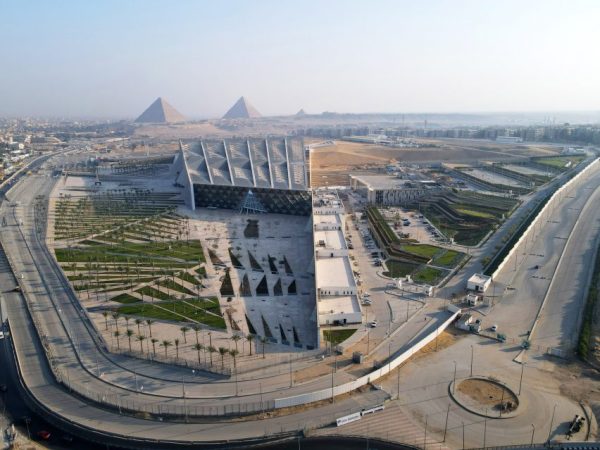The long-awaited Grand Egyptian Museum finally opened its main galleries for a trial run starting last month. Beginning Wednesday, October 16, it will host about 4,000 visitors per day. After more than a billion dollars and two decades worth of construction, the world’s largest archaeological museum still hasn’t had an official opening. However, progress is being made towards its complete unveiling to the world, even after major geopolitical instability in the region.
Boasting a footprint of 500,000 square meters, the GEM is strategically located between Cairo and the Great Pyramid of Giza. Not only is it expected to become one of the world’s leading institutions for archaeological study, but it’s also a part of the Egyptian government’s plan to increase tourism in the country to 30 million visitors by 2028. Though set back by obstacles such as the Arab Spring in 2011, the 2018 financial crisis, and COVID-19 in recent years, the museum’s construction has managed to reach near completion.

Twelve new galleries have now been opened to the public. ARTnews reports that 100,000 artifacts will be displayed, 20% of which are new to the public. The main galleries are organized according to dynasty and historical order, featuring thousands of pieces in each. Altogether, they provide a comprehensive history of Egypt’s past, spanning from as far back as the Old Kingdom in 2614 BCE.
ARTnews further explains the more prominent pieces on display. Highlights of the mock opening are Tutankhamen’s sarcophagus and over 5,000 artifacts from his tomb, a 30-foot tall statue of Ramses the Great made 3,200 years ago, and “Khufu’s ship,” the world’s oldest surviving wooden vessel. It was buried outside the Great Pyramid in 2,500 BCE and was meant to be an imitation of Ra’s solar barge from Egyptian mythology.
Exhibitions of sarcophagi, statues, jewelry, and art, bolstered by powerful visual and screen technology, have come together to execute the GEM’s main goal: “to change the way the world views Egypt, and how Egypt sees the world,” as journalist Miryam Naffaff from Nature Magazine proposes.














































































































































